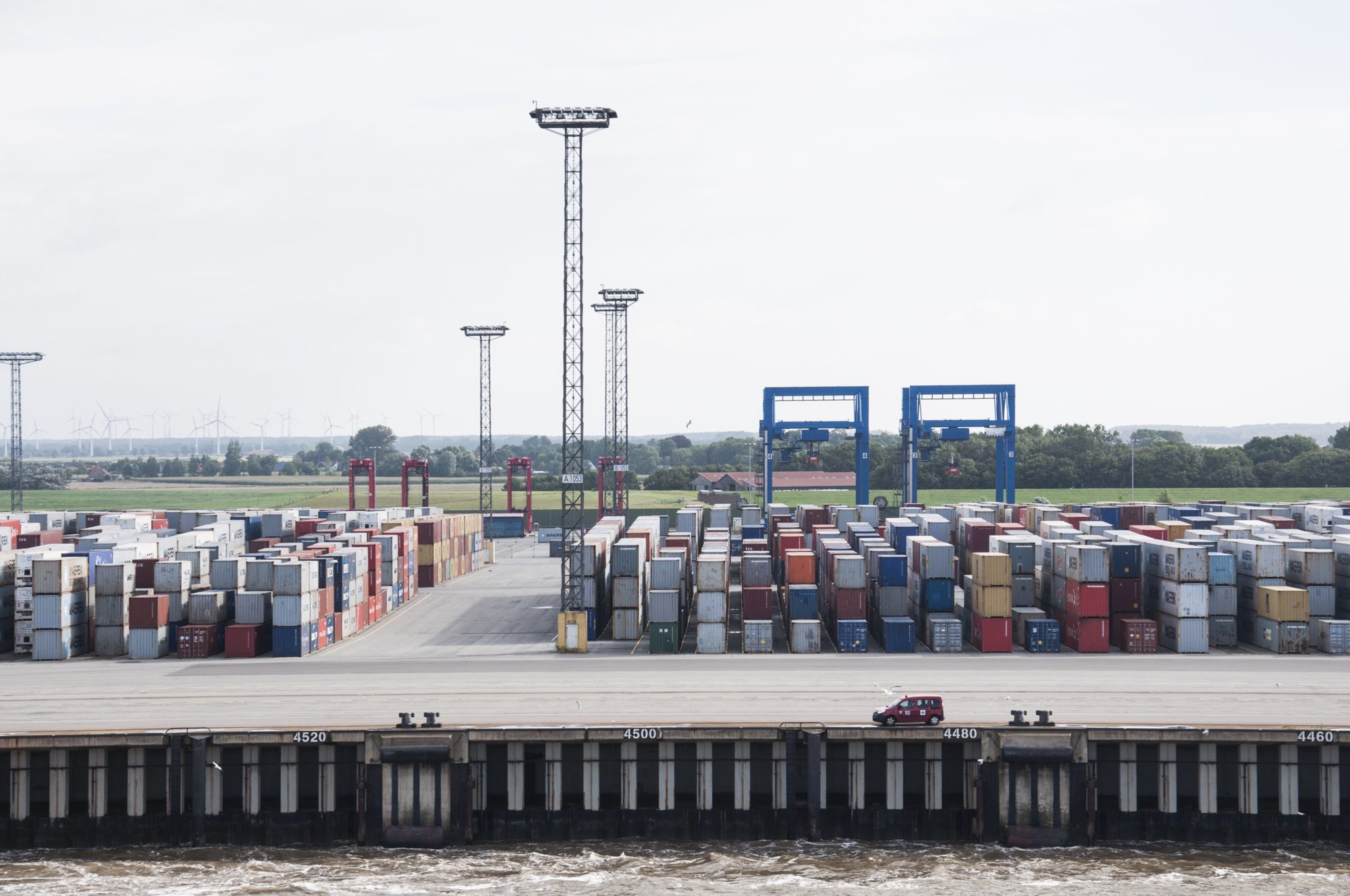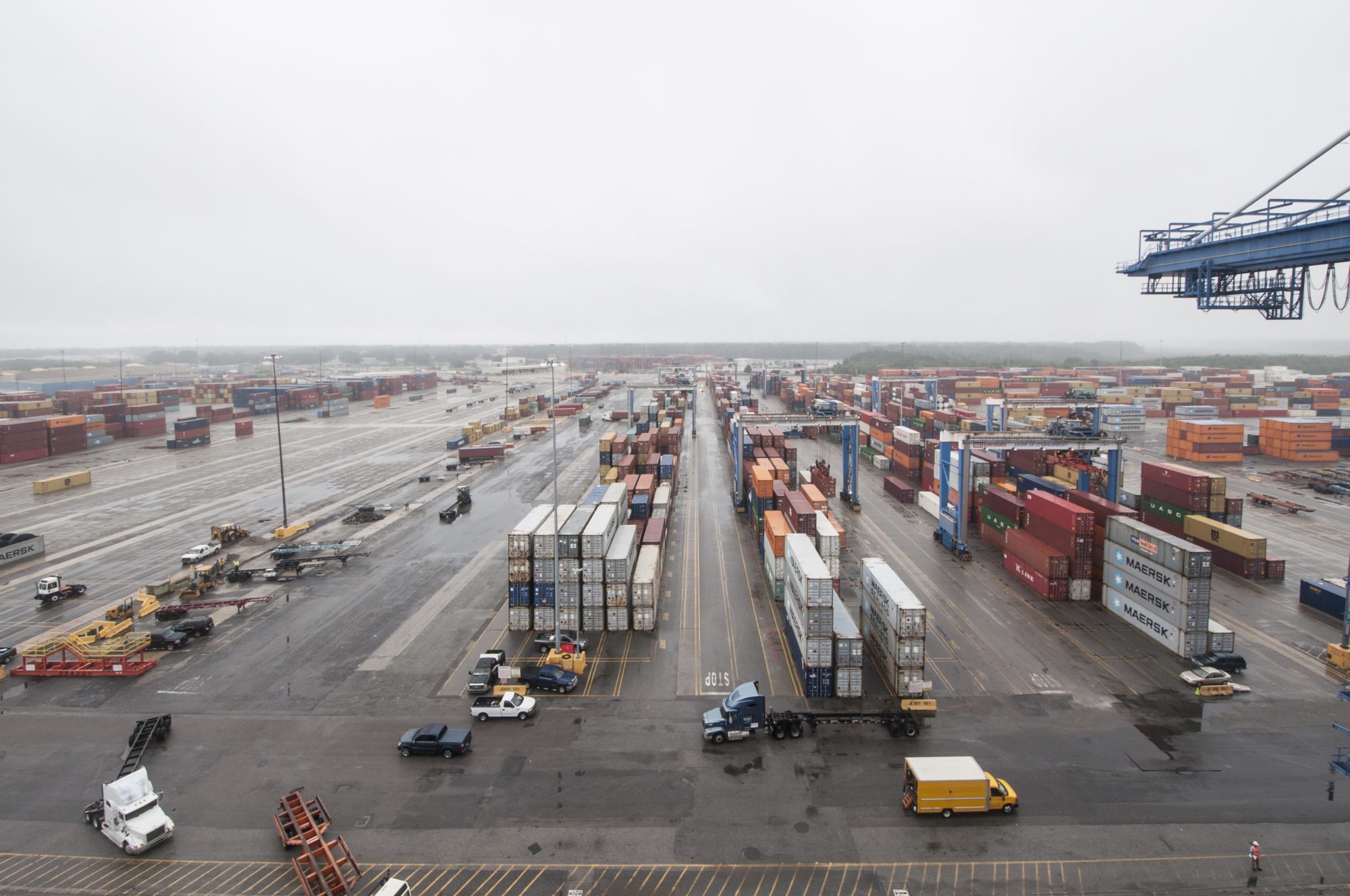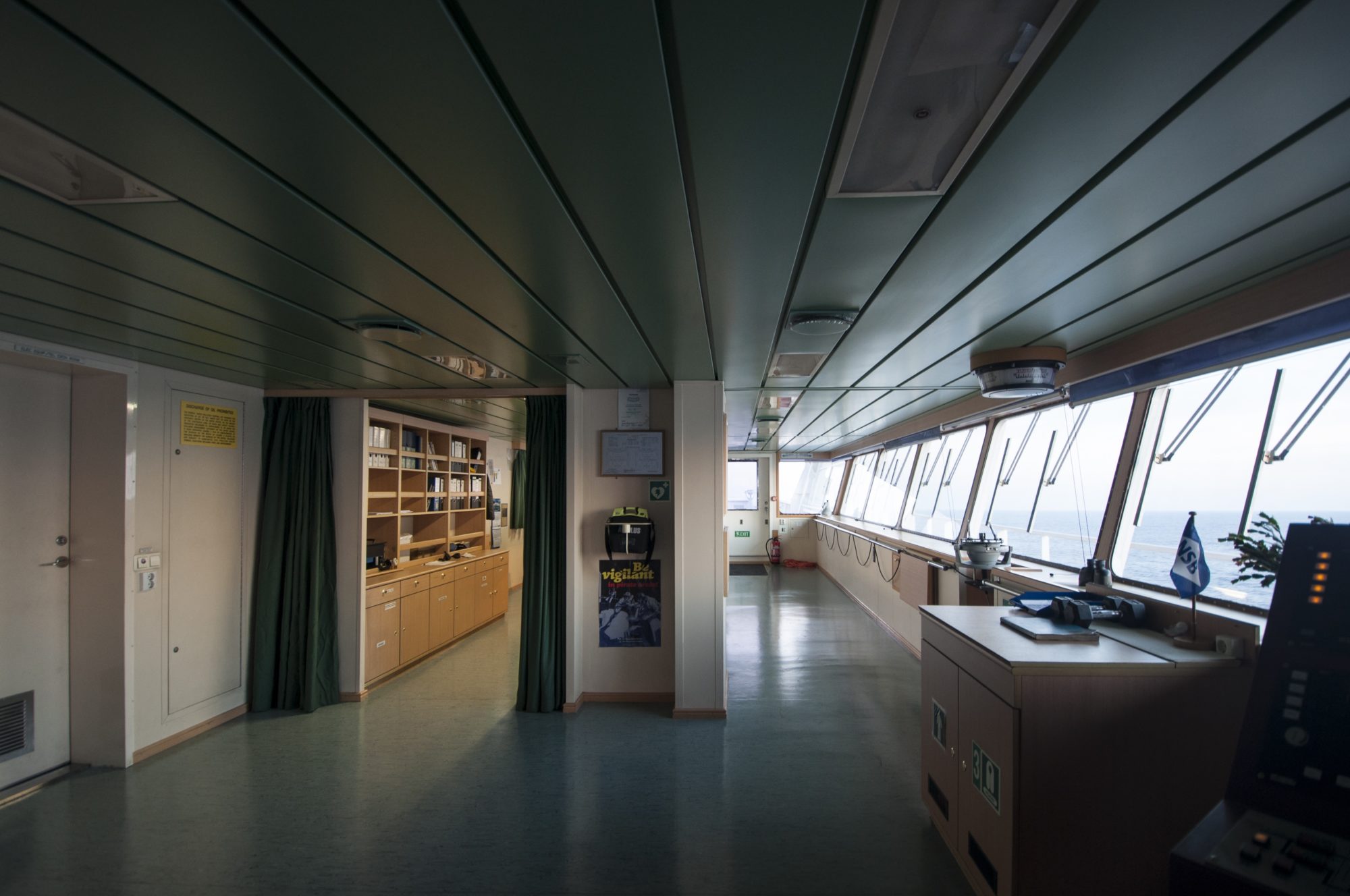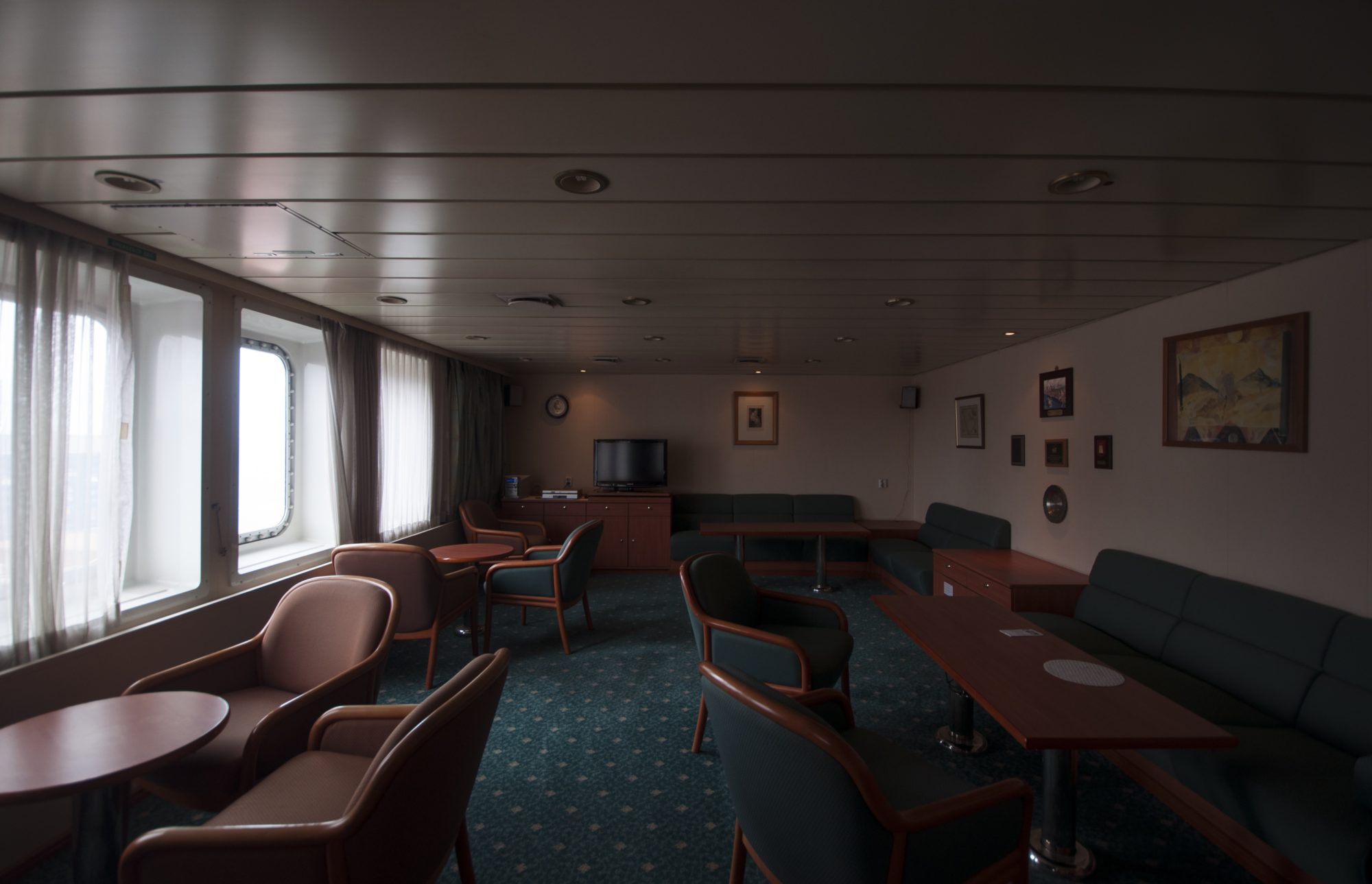Supernumerary

Share:
In August 2017, I was a passenger—a “supernumerary,” in shipping lingo—aboard a cargo ship that sailed the North Sea’s perimeter before crossing the Atlantic Ocean: Le Havre to Antwerp to Rotterdam to Bremerhaven and over Scotland to Charleston, South Carolina. These photographs and notes document the journey.
I am on a ship that measures 300 meters in length, the height of the Eiffel Tower. Twenty crewmembers operate the vessel. Despite my intent to explore, I see at most five people a day. There are a captain, three mates, four engineers, a cook, a steward, and an assortment of ABs (Able-Bodied), OSs (Ordinary Seamen), oilers, and welders; there is no doctor, and there are no women. The officer-ranked crew are from Poland, Romania, Ukraine, Russia, and Estonia; the rest are Filipino.
—
Meals gesture at communal gathering, albeit in the ship’s structurally and culturally bifurcated manner. The officer’s mess serves Western cuisine to the table; the other mess presents a self-serve buffet of stir-fries, rice, and soup. However, a 24/7 operating schedule designed to maximize labor efficiency keeps the crew busy. Meals are formally scheduled when more men are on-shift than off. It is more common to see food on saran-wrapped plates than to see the men to whom they belong.
Perpetual movement, unpredictable in its intensity, obliges onboard contraptions that secure objects. Lamps and television screens are screwed to tables and desks, which are secured in place to the floor. In cupboards, dishes rest in cavities to prevent potential shifting. I am loose within a container tossed by waves. I learn from the crew to sleep on my cabin’s couch, oriented perpendicularly to the bed, so that I don’t rock side to side around my long axis and, instead, pitch as if lying on a seesaw.
—
I discover the ship’s indoor pool: 80 cubic meters of the calamitous, capacious, and very salty outside sea, drawn inside for enjoyment. In it, the body floats effortlessly. On rough days, treading at its center approximates sitting upon a fulcrum—near-stillness surrounded by constant swing.
The ship runs on auto-pilot; its path, calibrated to lower gas consumption and travel times, traces the earth’s curvature. Exact position is communicated through coordinates and inconsequential to most persons on board. The number of days left before the next port of call defines a more germane location in time.
—
At port, gantry cranes (increasingly operatorless) reorder identically sized containers. Ballasts are re-balanced, and soon the ship returns to sea. The standardization of cargo has led to an automated choreography of material flow that requires little human oversight. For most members of the crew, whose jobs comprise of maintenance tasks—rust removal, leak sealing, greasing, deck cleaning, feeding—they are just along for the ride.
Kate Yeh Chiu is a designer and researcher. Her writing has recently appeared in Pidgin Magazine, San Rocco, and KEYWORDS;…Relevant to Academic Life, &c.











